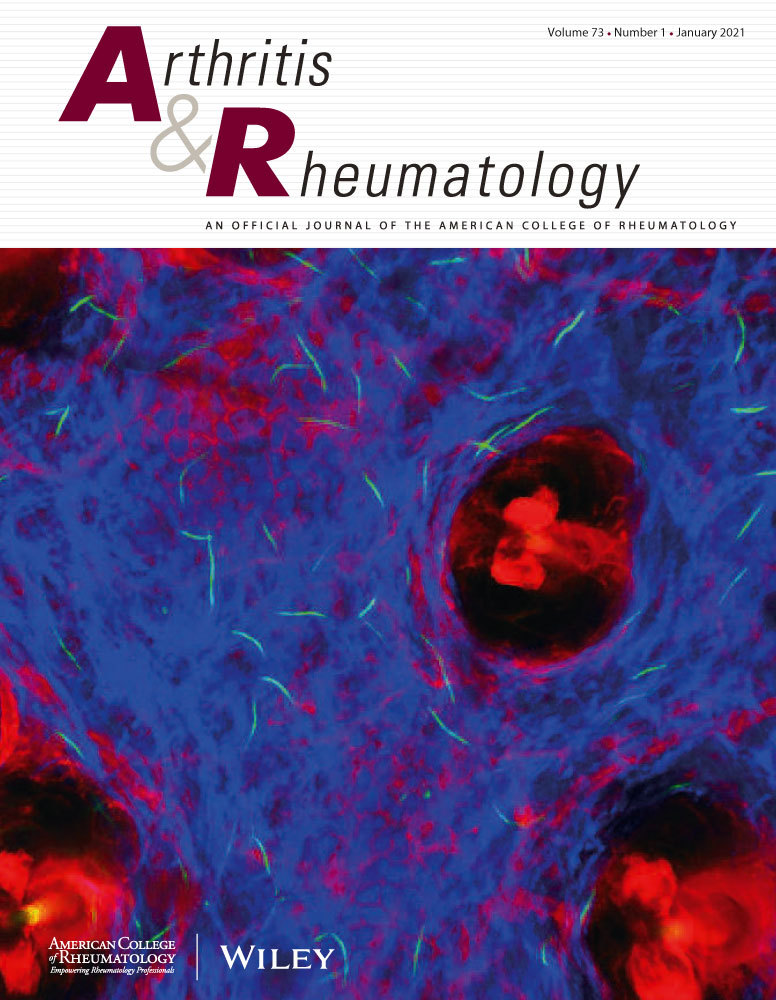Sjögren疾病-B细胞在边缘:从自身免疫到淋巴瘤发生和新的B细胞靶向治疗的兴起。
IF 10.9
1区 医学
Q1 RHEUMATOLOGY
引用次数: 0
摘要
Sjögren疾病(SjD)是一种常见的系统性自身免疫性疾病,其特征是外分泌腺的炎症,导致干燥。患者经常表现出影响不同器官系统的腺外表现。到目前为止,还没有fda批准的用于SjD的疾病改善疗法。在这篇综述中,我们探讨了SjD内分型作为一种增强患者分层、预后和临床决策的工具的扩展领域。由B细胞活性升高驱动的SjD内型与淋巴瘤风险增加有关。B细胞通过产生自身抗体、呈递抗原和释放促炎细胞因子在SjD发病过程中发挥核心作用。这些功能不仅有助于自身免疫,而且有助于淋巴瘤转化。我们通过一个SjD患者的病例来说明这些概念,该患者在多年复发性腺体肿胀后发展为腮腺MALT淋巴瘤-突出了风湿病学家的常见但具有挑战性的情况。以本病例为框架,我们研究了SjD中驱动自身反应性和淋巴瘤形成的B细胞的病理生物学。最后,我们回顾了新兴的B细胞靶向治疗,它们反映了SjD治疗领域从症状管理到基于疾病免疫病理学的靶向治疗的更广泛转变。本文章由计算机程序翻译,如有差异,请以英文原文为准。
Sjögren Disease-B Cells at the Brink: From Autoimmunity to Lymphomagenesis and the Rise of Novel B Cell-Targeted Therapies.
Sjögren disease (SjD) is a common systemic autoimmune disorder characterized by inflammation of the exocrine glands, resulting in dryness. Patients frequently exhibit extraglandular manifestations affecting various organ systems. To date, there are no FDA-approved disease-modifying therapies for SjD. In this review, we explore the expanding field of SjD endotyping as a tool to enhance patient stratification, prognostication, and clinical decision-making. SjD endotypes driven by heightened B cell activity are linked to increased lymphoma risk. B cells play a central role in SjD pathogenesis by producing autoantibodies, presenting antigens, and releasing pro-inflammatory cytokines. These functions contribute not only to autoimmunity but also to lymphomatous transformation. We illustrate these concepts through the case of a patient with SjD who developed parotid MALT lymphoma after years of recurrent glandular swelling-highlighting a common yet challenging scenario for practicing rheumatologists. Using this case as a framework, we examine the pathobiology of B cells in SjD that drive autoreactivity and lymphomagenesis. Finally, we review emerging B cell-targeted therapies that reflect a broader shift in the SjD treatment landscape from symptomatic management to targeted therapies grounded in disease immunopathology.
求助全文
通过发布文献求助,成功后即可免费获取论文全文。
去求助
来源期刊

Arthritis & Rheumatology
RHEUMATOLOGY-
CiteScore
20.90
自引率
3.00%
发文量
371
期刊介绍:
Arthritis & Rheumatology is the official journal of the American College of Rheumatology and focuses on the natural history, pathophysiology, treatment, and outcome of rheumatic diseases. It is a peer-reviewed publication that aims to provide the highest quality basic and clinical research in this field. The journal covers a wide range of investigative areas and also includes review articles, editorials, and educational material for researchers and clinicians. Being recognized as a leading research journal in rheumatology, Arthritis & Rheumatology serves the global community of rheumatology investigators and clinicians.
 求助内容:
求助内容: 应助结果提醒方式:
应助结果提醒方式:


